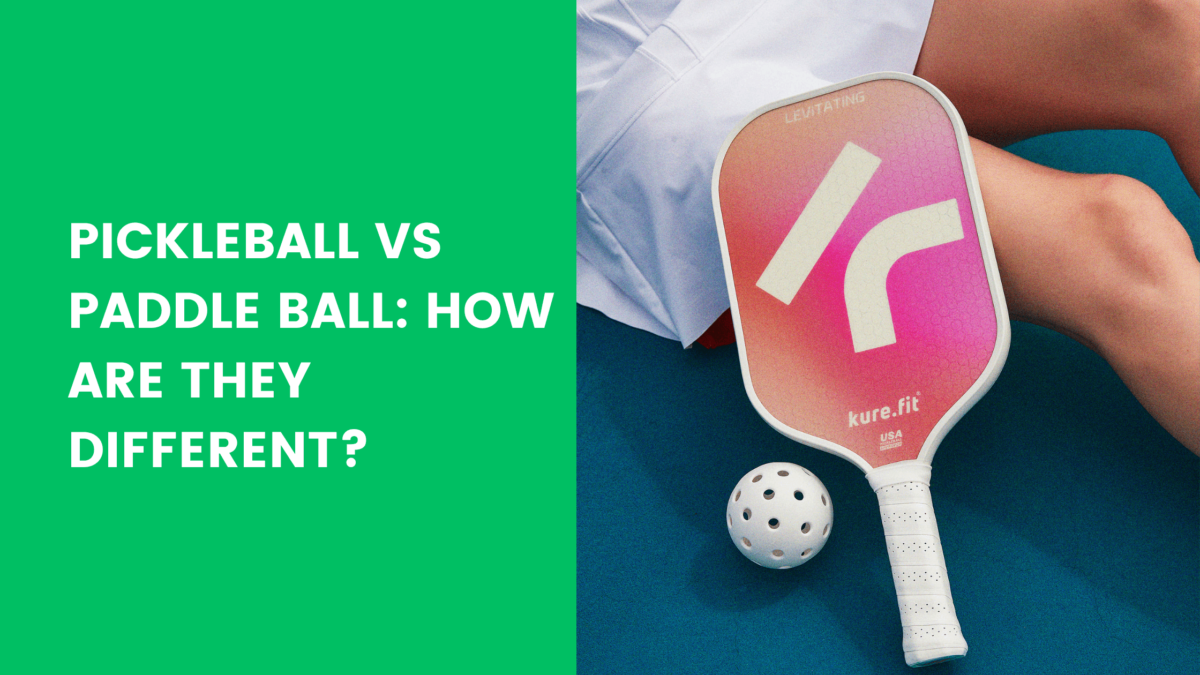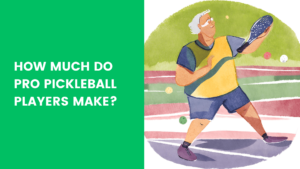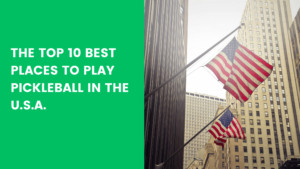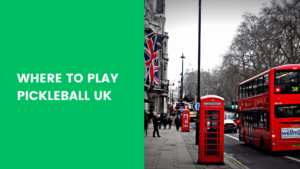Pickleball and paddleball are two racket sports that have gained significant popularity in recent years. While both share similarities, they also have distinct differences in terms of equipment, rules, and gameplay. Understanding these disparities can help enthusiasts choose the sport that best suits their preferences and abilities.
Pickleball vs PaddleBall
Equipment Comparison
One of the primary differences between pickleball and paddleball lies in their equipment. In pickleball, players use solid paddles made of wood, composite materials, or graphite, along with a perforated plastic ball similar to a wiffle ball. The court dimensions are specifically designed for pickleball, featuring a smaller size compared to traditional tennis courts.
Conversely, paddleball utilizes solid paddles typically made of wood or composite materials, paired with a rubber ball similar in size to a tennis ball. The court for paddleball is larger than a pickleball court, resembling the dimensions of a traditional tennis court. Additionally, the playing surface may vary, ranging from concrete to asphalt or indoor sports flooring.
Rules and Gameplay
The rules and gameplay mechanics of pickleball and paddleball also differ significantly. In pickleball, players serve underhand, and points can only be scored by the serving team. The game typically follows a rally scoring system, where points can be won on both serves and returns. Additionally, pickleball allows for the use of the double bounce rule. This requires the ball to bounce once on each side of the net before volleys are permitted.
In contrast, paddleball follows a more traditional scoring system, where only the serving team can earn points. The serving technique in paddleball varies, with players employing both underhand and overhand serves. Unlike pickleball, there is no double bounce rule in paddleball, allowing for more aggressive gameplay at the net.
Physical Demands and Fitness Benefits
Both pickleball and paddleball offer significant physical benefits, but they differ in terms of the demands placed on players. Pickleball is known for its emphasis on strategy and placement rather than raw power, making it accessible to players of all ages and fitness levels. The smaller court size and slower ball speed also reduce the risk of overexertion and injury.
On the other hand, paddleball requires more dynamic movements and greater physical exertion due to the larger court size and faster ball speed. Players must possess superior speed, agility, and endurance to excel in paddleball, making it a more demanding sport in terms of physical fitness.
Skill Requirements
While both sports require a certain level of skill and proficiency, they emphasize different aspects of gameplay. Pickleball places a greater emphasis on finesse and precision, requiring players to master the art of placement and strategy. Hand-eye coordination is crucial in pickleball, as players must anticipate and react quickly to their opponent’s shots.
Paddleball, on the other hand, rewards players with power and speed. The faster pace of the game necessitates quick reflexes and decisive shot-making, making paddleball ideal for players who thrive in high-pressure situations. Adaptability is also essential in paddleball, as players must adjust their gameplay based on the speed and trajectory of the ball.
Also read :Pickleball vs Badminton Uncovering the Key Differences
Community and Social Aspects
Both pickleball and paddleball boast vibrant and inclusive communities that welcome players of all ages and skill levels. Pickleball has experienced rapid growth in recent years. With dedicated courts springing up in parks, recreational centers, and retirement communities across the country. The social aspect of pickleball is equally appealing, with players enjoying friendly competition and camaraderie on the court.
Paddleball also has a strong community presence, particularly in urban areas where outdoor courts are readily available. Tournaments and leagues provide opportunities for players to test their skills against others and forge lasting friendships. Additionally, paddleball offers a sense of nostalgia for those who grew up playing the sport, fostering a deep sense of camaraderie among enthusiasts.
Cost Considerations
When it comes to cost considerations, pickleball has a distinct advantage over paddleball. The equipment required for pickleball, including paddles and balls, is relatively affordable and widely available. Additionally, many public parks and recreational facilities offer free or low-cost pickleball courts. This makes it an accessible option for budget-conscious players.
Paddleball, on the other hand, can be more expensive due to the larger court size and specialized equipment. Quality paddleball paddles can be pricey, especially for those made from high-performance materials such as carbon fiber or composite alloys. Moreover, access to paddleball courts may be limited in certain areas, requiring players to pay for court rental or membership fees at private clubs.
Environmental Impact
In terms of environmental impact, both pickleball and paddleball have relatively low carbon footprints compared to other sports such as golf or tennis. Pickleball courts are typically constructed using environmentally friendly materials, and the lightweight plastic balls used in the game are recyclable. Additionally, pickleball encourages outdoor recreation and physical activity, fostering a deeper connection with nature.
Paddleball courts may have a slightly higher environmental impact due to their larger size and resource-intensive construction materials. However, efforts are underway to promote sustainable practices within the paddleball community, such as using eco-friendly equipment and minimizing water usage on outdoor courts. Overall, both sports contribute positively to environmental conservation efforts by promoting outdoor recreation and fostering a sense of stewardship among players.
Comparison of Playing Surfaces
Another notable difference between the two is the playing surface. Pickleball is commonly played on a variety of surfaces, including indoor gym floors, outdoor tennis courts, and dedicated pickleball courts. The type of surface can significantly impact gameplay, with indoor courts offering better traction and consistency, while outdoor courts may be subject to weather-related variations.
Paddleball courts, on the other hand, are typically found outdoors and may vary in surface materials. Asphalt and concrete courts are commonly used for outdoor paddleball, providing a durable and relatively smooth playing surface. Some paddleball enthusiasts also prefer playing on indoor sports flooring, which offers better shock absorption and reduced impact on joints.
Cultural Influence and Representation
Both have deep-rooted cultural influences and historical significance. Pickleball traces its origins back to the mid-20th century, when it was invented as a backyard pastime for families in the United States. Over the years, pickleball has evolved into a competitive sport with a dedicated following, transcending generational and cultural boundaries.
Paddleball, on the other hand, has a rich cultural heritage dating back to the early 20th century. It gained popularity in urban communities, particularly among African American and Latino players, who embraced the sport as a form of recreation and social expression. Today, paddleball continues to thrive in cities across the country, reflecting its cultural significance and enduring appeal.
Injury Risk and Safety Measures
While both pickleball and paddleball are relatively safe sports, they carry a risk of injury, particularly for players who engage in intense or competitive gameplay. Common injuries in pickleball include sprains, strains, and overuse injuries, often resulting from repetitive movements and sudden changes in direction. To mitigate these risks, players are encouraged to warm up properly before playing, wear supportive footwear, and practice proper technique to reduce the strain on joints and muscles.
In paddleball, injuries may occur due to collisions with opponents or falls on hard surfaces. Sprained ankles, wrist injuries, and muscle strains are among the most common types of injuries reported by paddleball players. To prevent injuries, players should wear protective gear such as wrist guards and knee pads, maintain proper court awareness, and avoid overly aggressive play that could result in accidents.
Training and Skill Development
Both pickleball and paddleball offer ample opportunities for players to improve their skills and develop their game. Pickleball enthusiasts can take advantage of coaching programs, skill clinics, and online resources to hone their technique and strategy. Many recreational centers and community organizations also offer beginner-friendly classes and workshops to help new players get started.
Paddleball players can similarly benefit from structured training programs and personalized coaching to enhance their skills and performance. Skill clinics led by experienced players provide valuable insights and hands-on instruction, allowing players to learn new techniques and refine their gameplay. Additionally, online tutorials and instructional videos offer convenient access to expert advice and training tips for players of all levels.
Growth Trends and Future Prospects
Both pickleball and paddleball are experiencing significant growth in popularity, driven by increasing participation rates and widespread media coverage. Pickleball, in particular, has seen a surge in interest among players of all ages, thanks to its accessibility and easy-to-learn rules. Tournaments and leagues continue to attract top talent from around the world, further fueling the sport’s expansion and visibility.
Paddleball, while less widely known than pickleball, is also experiencing a resurgence in interest, particularly among urban communities and recreational players. Tournaments and events organized by local clubs and organizations help promote the sport and showcase its competitive appeal. As awareness of paddleball grows, so too does the potential for increased participation and investment in infrastructure and development initiatives.
Comparative Analysis: Pickleball vs Paddle Ball
In summary, pickleball and paddleball offer unique experiences and benefits for players of all ages and skill levels. While both sports share similarities in terms of equipment and gameplay, they also have distinct differences in rules, physical demands, and cultural significance. Whether you prefer the strategic finesse of pickleball or the fast-paced intensity of paddleball, there’s no shortage of opportunities to enjoy these exciting racket sports and reap the rewards of active play.
Conclusion
In conclusion, the comparison between pickleball and paddleball reveals fascinating insights into two distinct yet equally enjoyable racket sports. Whether you’re drawn to the strategic challenges of pickleball or the dynamic energy of paddleball, both sports offer a fulfilling and engaging experience for players of all backgrounds. By exploring the unique characteristics and benefits of each sport, enthusiasts can discover new opportunities for physical activity, social interaction, and personal growth on and off the court.
FAQs (Frequently Asked Questions)
- Which sport is easier for beginners: pickleball or paddleball?
- Pickleball is generally considered easier for beginners due to its slower pace and simpler rules, making it more accessible for players of all ages and skill levels.
- Is pickleball suitable for older adults?
- Yes, pickleball is highly popular among older adults due to its low-impact nature and emphasis on strategy over athleticism. Many retirement communities offer pickleball courts and programs for seniors.
- Can I play pickleball and paddleball indoors?
- Yes, both sports can be played indoors on suitable courts. Many recreational centers and sports facilities offer indoor pickleball and paddleball courts for year-round play.
- Are there professional leagues for pickleball and paddleball?
- Yes, both sports have professional leagues and tournaments that attract top players from around the world. The Professional Pickleball Association (PPA) and the World Paddleball Association (WPA) are two notable organizations dedicated to promoting and organizing competitive play.
- What is the difference between paddleball and platform tennis?
- Paddleball and platform tennis are two distinct racket sports with different rules and equipment. Paddleball is played with solid paddles and a rubber ball on outdoor or indoor courts, while platform tennis is played with perforated paddles and a rubber ball on elevated, heated courts enclosed by wire fencing.






Pingback: Padel vs Pickleball-What's the difference? - All about pickleball